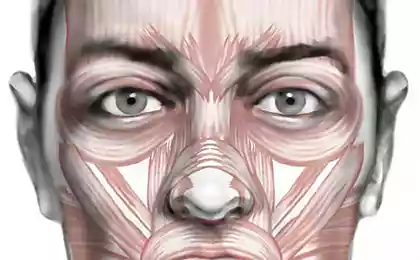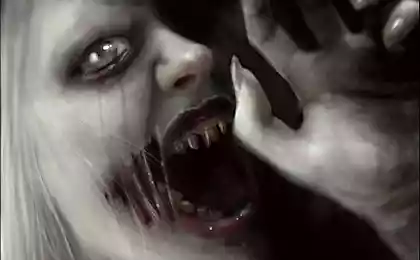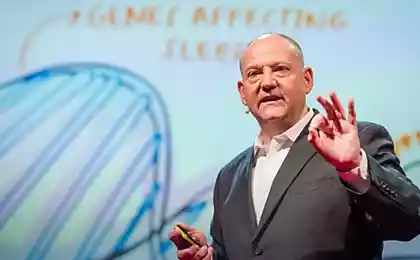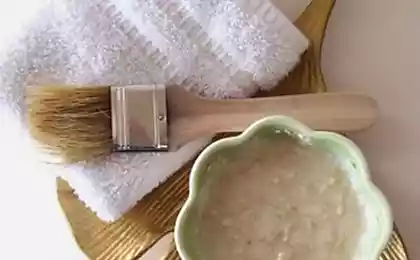1569
Lucid dreaming and REM sleep mask Remee - whether it is possible to control their dreams
At nightfall I'll introduce you to the history of the study of lucid dreams, talk about the key figures in science, which stood at the origins of the opening of the fast phase of sleep, or REM, and briefly share my experience "lucid dreams" mask Remee
Good evening!

Background
Sleep can be divided into two stages, one of which is: paradoxical, nonsynchronous, fast, or REM, an acronym for Rapid eye movement (rapid eye movement), and it is this stage of "haunted" scientists from the middle of the last century.
Research, begun by American professor Nathaniel Kleitman (Kleitman), continues to this day, and they brought the whole association, expensive equipment and animals. Yes, we should say that scientists are now moved to the cats, rats and monkeys in an attempt to explain the phenomenon.

Kleitman i>
In short, it all began in 1953 when Kleitman has taught graduate students. And one of them, as well as a mentor with Russian roots, Eugene (Eugene) Aserinski noticed rapid eye movement, watching the sleeping man.
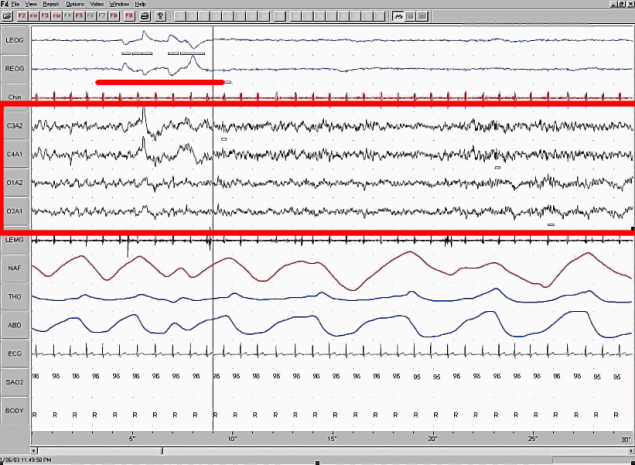
EEG and REM sleep (underlined) i>
However, some biographers Kleitman believe that interest in the phases of sleep had caused domestic work in 1926: "Periodic phenomena during sleep in children", which reveals the essence of the experiment on babies from 2 months to 2 years, and in particular spoke of palpitations breathing, eye movement and overall activity in the sleeping baby.
American researchers cite other "sources" opening Kleitman, particularly in teamwork Roffarga Howard, William Dement, Joseph Muzio and Charles Fisher of 1962 mentions George Trumbull Ladd observation, the famous psychologist 19th - early 20th centuries. It is believed that he was still in 1892 saw this phase of sleep, and immediately suggested what is now concerned researchers. Ladd found that dreams come just in time REM! It seemed strange that the eyes move, but, in his opinion, and they certainly look somewhere.

Ladd i>
From Kleitman and Aserinski thread leads to the last classmate William Dement, who just insisted and continued view Ladd, tying REM sleep since the arrival of dreams.
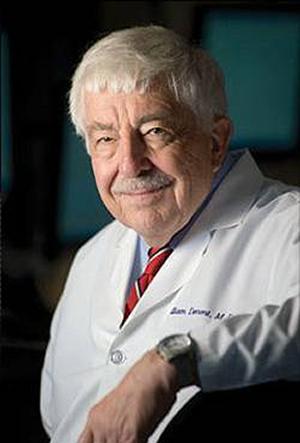
William Dement i>
We must say at once that for various reasons it is quite impossible to prove, but the theory is widespread. In particular a large attempt to explain it was made in 1997 by scientists W. Zhou and VM King. The work was dedicated to eye movements and asserted including that saccades are not coordinated. That is, during sleep, the individual may be observed in different directions.

Eye movements during REM i>
Dement work was supported by the Christian Guilleminault. He tried to find a connection with mental and physical disabilities, identify patterns between the phases of sleep, human activity in sleep and respiratory diseases, cardiovascular disorders.

The results of cooperation between the two scientists became the term "Obstructive sleep apnea syndrome", or delays in breathing during sleep and is designed "Index apnea - hypopnea." Anyway with these ever since psychology and philosophy a bit lost "real" medicine, and sleep became an assistant analyst in the diagnosis of serious diseases.
In parallel with the research work was carried out in the United States and in other countries, and a central figure in Europe for the study of sleep is recognized Michel Jouvet (Juvet), whose early works are characterized by high "romance." He tried to link the need for a vision of dreams to the existence of man as a person. In 1959 he held his first experiment on cats, as in Russia today is better known as the author of the novel "The Castle of Dreams."

Jouvet i>
Many of those standing at the origins of work today, Kleitman, having lived 104 years, he died in 1999, having survived a year of his graduate students. Tragically Eugene Aserinsky died in 1998, allegedly falling asleep at the wheel.

Michel Juvet, William Dement, Nathaniel Kleitman and Eugene Aserinsky i>
Currently, research is ongoing and deepening, largely due to advances in technology. However, attempts to analyze the brain brain still can not be considered successful. However, judging by the titles of articles, the researchers focused on a point problems, try to explore the parts of the brain waves of the arc, the angle of the eye during the REM phase, and so on. N.
Of academic publications to recall the two magazines devoted to only sleep problems, "Journal of sleep research" and "Dreams and biological rhythms," one of which is issued by the European Society of sleep research, the second - the Japanese.

Magazine covers i>
Sleep to the body
Since childhood, I have heard that sleep - it's good, and the brain is resting in a dream. Now, a quick look at some work, I realize that this is not true. Special attention to where and how emerging flows REM sleep is given because in moments of REM brain is very active. In one of his works in 2005 M. Shteriad even suggest that too much activity can develop into convulsions, probably due to the activation of "theta waves", responsible for creativity, memory, creativity. Such waves are responsible for "impulsive" and REM sleep is characterized by the fact that few people responsible for the actions of their muscles.

Wave bursts in the brain stem are especially noticeable in the visual cortex of the brain and provoke the "rapid eye movement". According to studies, the amplitude of the waves affect acetylcholine, and so some scientists believe that the deprivation of REM sleep can cause Alzheimer's disease and memory loss. In some cases, doctors even resorted to injections.
In general, the activity of neurons in the brain stem during sleep begins in the locus coeruleus, "responsible" for norepinephrine, which suppresses REM.

Communication between neurons "for" and neurons "against" proved Robert McCarley and Allan Hobson, in fact claiming that the interaction of neurons is a "push" factor from one sleep phase to another, and each of them individually is impossible.
This is confirmed inhumane observations made on animals: the destruction coeruleus suppressed REM sleep, for example, in cats.

cat's eye movement during REM sleep and not fast i>
A little later, Michel Jouvet expressed a similar thought about the "birthplace" of dreams, proving that acetylcholine during REM manifested in a higher concentration than during wakefulness and "conflict" with blue spots.
Not only brain activity is seen as a sign of REM. It is noted that this phase may be accompanied by irregular heart rate, pressure, respiration, body temperature, and several other characteristics.

Phase may be accompanied by muscle atonia, partial paralysis, while as their normal work is related to the phase of deep sleep, and it is in a deep sleep fall cases of sleepwalking.
Influence of REM on the body and is seen through the prism of other areas of medicine, such as psychology and other sciences, such as philosophy, cultural studies.
More and more scientists confer REM stimulation functions of memory, development of creative abilities, and the "right" to sleep "true number of alternations" phase has beneficial effects on the central nervous system. By "true" should be understood in adults 25% REM, or 90 - 120 minutes per night, children - 50%.
Lucid dreaming
As already mentioned, it is believed that it is accompanied by a phase of REM dreams. This hypothesis in our develops Mark Solms, claiming that the people awakened during REM sleep more accurately recount their dreams, remember more details. This idea made it possible again speak about lucid dreaming, already from a scientific point of view.
In fact, the origins of the concept of "lucid dream" should be sought in ancient times, and in particular in his book «Hipnagogia» in 1987, Andreas Mavromatis quoted Aristotle.
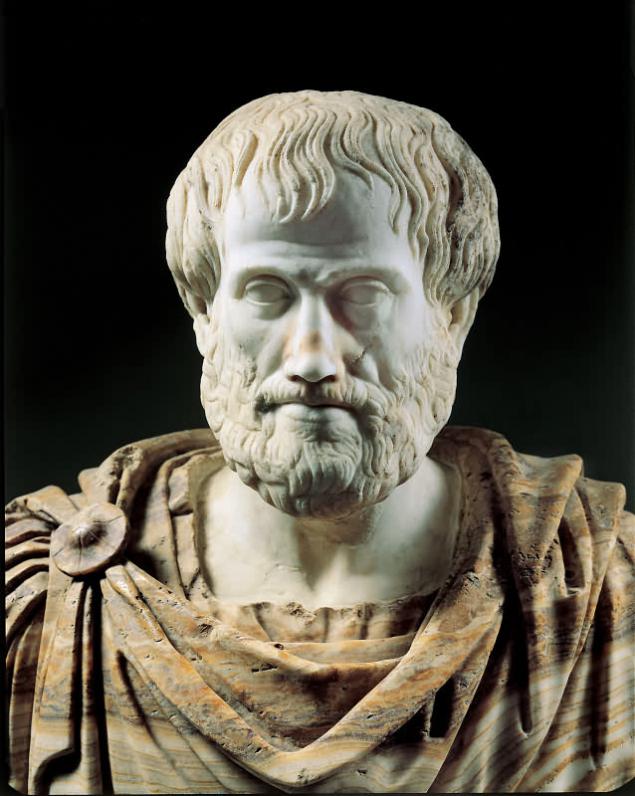
Aristotle i>
Antique perception sleep very much dependent on the beliefs and Krupneshaja philosophers of that time tried to link sleep with the possibility of a deity to express themselves, their will, what guidance can be found even in the "Odyssey" of Homer and in the "Theogony" Hesiod. According to the last god of sleep Hypnos is the brother of Thanatos, and there should be clearly understand the relationship of death and sleep. So one of the "functions" of sleep in the ancient culture could be - an attempt to explain and prove life after death, and therefore the lucid dreams were of paramount importance, and people experiencing them ascended as the prophets! Enjoyed special respect those who have had an out of body experience.
Whatever it was actually ... But Aristotle first made the observation that the dream visions are due to sensory experiences. In his paper "dreams", he said that things perceived by the senses, remain in memory even when not physically present. And these images, in his opinion, and sees a man in a dream. At the same time, curious phrase sounds and further: "What happens in such cases, can be compared with a moving particle", ie, it turns out that the phase of REM sleep and its characteristic neuronal activity described in ancient times in a simpler terminology.
Aristotle considering man to realize his dreams, but in his sleep aesthetics - is a "fantasy" that occurs only in the presence of sensory experience, and therefore, according to the philosopher, some completely deprived of the opportunity to dream, especially children, at the While old age night vision "progress."
The term "Lucid dreaming" coined by the Dutchman Frederik van Eden. Psychiatrist, was in correspondence with Hesse and Kropotkin, began as a doctor a fellow alcoholic. At an early stage of their theoretical search was under the influence of Hindu philosophy, from which "reached out" to the concept of lucid dreaming. The notion is related characteristic of Hinduism and Buddhism states in which reside yoga.

Eden i>
Experience lucid dreaming is described in the cult "Religions doctor" Thomas Brown (1605 - 1682), where he dream is inextricably linked with the other and the divine presence, and the author repeatedly thank God for the wonderful dreams.
The diaries of different people of the time you can also find instructions on getting some pleasure from participating in their own dream.

Brown i>
Continuing this tradition, many have become not only explore the possibility of lucid dreaming, but also became, as it were, we are now called "coachers" on this issue. 20 years of experience in their sleep study published in 1867 by Marie-Jean-Leon, the Marquis de d'Hervi Saint-Denis.
Eminent Sinologist and translator of his time, are likely to experience the influence of Eastern culture, and became known as a researcher of dreams. Writing down your dreams from 13 years of age, he argues that learned to manage and demonstrates how this happened in his personal experience.
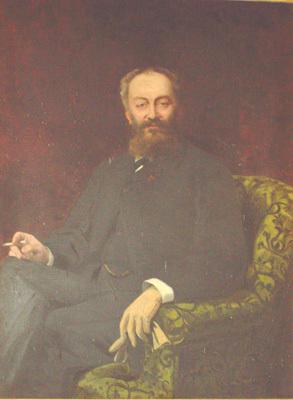
Saint-Denis i>
Currently, the possibility of lucid dreaming is considered skeptical, and a number of scientists, even though they do not deny it, but they say that the only way to check - just awakened to believe!
This view is shared by the philosopher Norman Malcolm analytical direction, which paid great attention to the problems of memory and sleep in his writings. Skepticism due to its methodology, in particular the view that any result counterintuitive, is false.
Criticism on the part of "old school", in particular Dr. Hobson said that all that is called lucid dreaming logically refers to a specific embodiment of meditation.
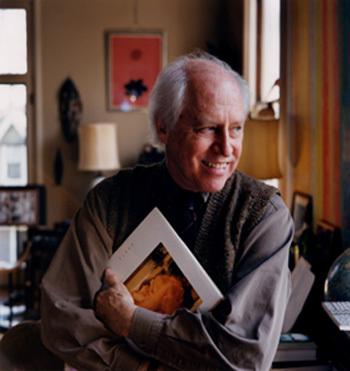
Hobson i>
After nearly a decade of arguments "for" and "against" were analyzed Celia Green, and she came to the conclusion that lucid dreaming is very similar to the so-called "false awakenings."
Even decades later, the British scientist Kate Hearn held its first scientific study of lucid dreaming with the use of technology in which confirmed somehow that: firstly, the person has a dream, and secondly, they can manage, thirdly, the signals served inside the body, you can learn to control and respond to them.
Sami signs of "lucid dreaming" were presented on the basis of generalization of the experience Paul Tole, a German professor of psychology in 1980. His study of dreams Tolia began with attempts to prove that dreams he sees color.
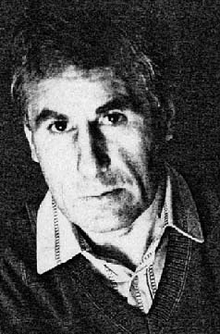
Tolay i>
Formulated features such lucid dreaming today:
A man understands that he is asleep and all will disappear upon awakening A person can make decisions in a dream A person can participate or watch Man remembers what is happening in a dream A man is aware of himself and his actions A man realizes the world around them
Also, according to scientists, lucid dreams are associated with high concentration of attention, and here is another plus in karma observations of phase REM.
To date, a key figure in the study of lucid dreaming is called Stephen LaBerge (LaBerge), a former physicist, now a parapsychologist Stanford.
Medical support research lucid dreaming is obtained for a number of reasons, but most often it is noted that this type of sleep would allow people suffering from nightmares, it is easier to experience nocturnal stress. As a consequence, in the opinion, scientists, it would avoid in special cases of depression, suicidal tendencies, and so on. N.

LaBerge i>
Individual attempts to introduce a person into a state of conscious sleep very clearly reminiscent of hypnosis, and this technique is now widely applied in various fields of psychological assistance, up to the treatment of alcoholics and drug dependencies.
Digression
First of all the value of sleep in human life very excited philosophers, writers, poets, artists, and not to say that the dream - a kind of "concept" in the art, it is definitely a powerful artistic technique.
At school, everyone wrote an essay on "Snam Vera" in Pushkin's "Groom" was in a dream to solve crimes, "Life is a Dream" Calderon remember fans of Spanish literature, and "Midsummer Night's Dream" by Shakespeare - English.
Writers are so accustomed us to the fact that no matter how tragic developed storyline, you can always "write off" all sleep and awaken the hero in the final. Remember "A Christmas Carol" Dickens Scrooge's transformation in the finale? Sometimes, such as in the novels of Kafka's hope for sleep is not justified, despite the absurdity and unreality of what is happening. And sometimes, in "The Metamorphosis", all with him and begins: "Waking up one morning after a restless sleep, Gregor Samsa found ..." and so on. N. A Anderson Ole is almost a forerunner of research Paul Tole.

Figure: Andersen, CBM, Kafka, Hoffmann, Dickens, Carroll i>
The most recognizable reception "sleep" in literature became, I think, after E.-T.-A. Hoffmann. Characteristic features of its "sleep" are defined in the "Golden pot" when the hero seems to be a dream, waking up, but he retained some part of the dream. Reflects on it and the student Anselm, and Veronica, remembering starshno nightmare journey to the old woman. Or a nightmare.
In domestic romanticism Pogorelsky should be called with the "Black Hen or Underground residents", and if we talk about the fabulous narratives in general, the most vivid dreams seen, of course, "Alice in Wonderland."
Remee
At this junction of medicine and philosophy in our time there mask Remee , whose name is derived from the designation of REM sleep. "Medical" component is that the mask understands what phase of sleep you reside, and during the period of REM sleep. Philosophical is "magic" diodes that gently disturb you and allow you to manage your lucid dreaming.
Fundraiser for Remee launched on Kickstarter and raised more than half a million dollars against the desired 35 000. The developers very creative approach to the description of the product mentioned by Aristotle, saying that the mysteries of sleep trying to unravel over the centuries, and just now have the opportunity to get to sleep and experience the unbelievable experience of lucid dreaming. "
In addition, the basic information is a diagram of the sleep division into phases and is referred to LaBerge, which I mentioned just above.
Thus, according to the creators, flickering diodes must occur in REM sleep, the most likely period in which a person sees a dream, and with the help of signals accurately and without giving wake up, move your consciousness from the "view" to "control" .
Set
Mask "Remy" is sold in a very compact box and comes with instructions in English.
href="http://medgadgets.ru/shop/adaptivnaja-dorozhnaja-zvukovosproizvodjaschaja-apparatura-sound-sleep-nomad.html">вот
Good evening!

Background
Sleep can be divided into two stages, one of which is: paradoxical, nonsynchronous, fast, or REM, an acronym for Rapid eye movement (rapid eye movement), and it is this stage of "haunted" scientists from the middle of the last century.
Research, begun by American professor Nathaniel Kleitman (Kleitman), continues to this day, and they brought the whole association, expensive equipment and animals. Yes, we should say that scientists are now moved to the cats, rats and monkeys in an attempt to explain the phenomenon.

Kleitman i>
In short, it all began in 1953 when Kleitman has taught graduate students. And one of them, as well as a mentor with Russian roots, Eugene (Eugene) Aserinski noticed rapid eye movement, watching the sleeping man.

EEG and REM sleep (underlined) i>
However, some biographers Kleitman believe that interest in the phases of sleep had caused domestic work in 1926: "Periodic phenomena during sleep in children", which reveals the essence of the experiment on babies from 2 months to 2 years, and in particular spoke of palpitations breathing, eye movement and overall activity in the sleeping baby.
American researchers cite other "sources" opening Kleitman, particularly in teamwork Roffarga Howard, William Dement, Joseph Muzio and Charles Fisher of 1962 mentions George Trumbull Ladd observation, the famous psychologist 19th - early 20th centuries. It is believed that he was still in 1892 saw this phase of sleep, and immediately suggested what is now concerned researchers. Ladd found that dreams come just in time REM! It seemed strange that the eyes move, but, in his opinion, and they certainly look somewhere.

Ladd i>
From Kleitman and Aserinski thread leads to the last classmate William Dement, who just insisted and continued view Ladd, tying REM sleep since the arrival of dreams.

William Dement i>
We must say at once that for various reasons it is quite impossible to prove, but the theory is widespread. In particular a large attempt to explain it was made in 1997 by scientists W. Zhou and VM King. The work was dedicated to eye movements and asserted including that saccades are not coordinated. That is, during sleep, the individual may be observed in different directions.

Eye movements during REM i>
Dement work was supported by the Christian Guilleminault. He tried to find a connection with mental and physical disabilities, identify patterns between the phases of sleep, human activity in sleep and respiratory diseases, cardiovascular disorders.

The results of cooperation between the two scientists became the term "Obstructive sleep apnea syndrome", or delays in breathing during sleep and is designed "Index apnea - hypopnea." Anyway with these ever since psychology and philosophy a bit lost "real" medicine, and sleep became an assistant analyst in the diagnosis of serious diseases.
In parallel with the research work was carried out in the United States and in other countries, and a central figure in Europe for the study of sleep is recognized Michel Jouvet (Juvet), whose early works are characterized by high "romance." He tried to link the need for a vision of dreams to the existence of man as a person. In 1959 he held his first experiment on cats, as in Russia today is better known as the author of the novel "The Castle of Dreams."

Jouvet i>
Many of those standing at the origins of work today, Kleitman, having lived 104 years, he died in 1999, having survived a year of his graduate students. Tragically Eugene Aserinsky died in 1998, allegedly falling asleep at the wheel.

Michel Juvet, William Dement, Nathaniel Kleitman and Eugene Aserinsky i>
Currently, research is ongoing and deepening, largely due to advances in technology. However, attempts to analyze the brain brain still can not be considered successful. However, judging by the titles of articles, the researchers focused on a point problems, try to explore the parts of the brain waves of the arc, the angle of the eye during the REM phase, and so on. N.
Of academic publications to recall the two magazines devoted to only sleep problems, "Journal of sleep research" and "Dreams and biological rhythms," one of which is issued by the European Society of sleep research, the second - the Japanese.

Magazine covers i>
Sleep to the body
Since childhood, I have heard that sleep - it's good, and the brain is resting in a dream. Now, a quick look at some work, I realize that this is not true. Special attention to where and how emerging flows REM sleep is given because in moments of REM brain is very active. In one of his works in 2005 M. Shteriad even suggest that too much activity can develop into convulsions, probably due to the activation of "theta waves", responsible for creativity, memory, creativity. Such waves are responsible for "impulsive" and REM sleep is characterized by the fact that few people responsible for the actions of their muscles.

Wave bursts in the brain stem are especially noticeable in the visual cortex of the brain and provoke the "rapid eye movement". According to studies, the amplitude of the waves affect acetylcholine, and so some scientists believe that the deprivation of REM sleep can cause Alzheimer's disease and memory loss. In some cases, doctors even resorted to injections.
In general, the activity of neurons in the brain stem during sleep begins in the locus coeruleus, "responsible" for norepinephrine, which suppresses REM.

Communication between neurons "for" and neurons "against" proved Robert McCarley and Allan Hobson, in fact claiming that the interaction of neurons is a "push" factor from one sleep phase to another, and each of them individually is impossible.
This is confirmed inhumane observations made on animals: the destruction coeruleus suppressed REM sleep, for example, in cats.

cat's eye movement during REM sleep and not fast i>
A little later, Michel Jouvet expressed a similar thought about the "birthplace" of dreams, proving that acetylcholine during REM manifested in a higher concentration than during wakefulness and "conflict" with blue spots.
Not only brain activity is seen as a sign of REM. It is noted that this phase may be accompanied by irregular heart rate, pressure, respiration, body temperature, and several other characteristics.

Phase may be accompanied by muscle atonia, partial paralysis, while as their normal work is related to the phase of deep sleep, and it is in a deep sleep fall cases of sleepwalking.
Influence of REM on the body and is seen through the prism of other areas of medicine, such as psychology and other sciences, such as philosophy, cultural studies.
More and more scientists confer REM stimulation functions of memory, development of creative abilities, and the "right" to sleep "true number of alternations" phase has beneficial effects on the central nervous system. By "true" should be understood in adults 25% REM, or 90 - 120 minutes per night, children - 50%.
Lucid dreaming
As already mentioned, it is believed that it is accompanied by a phase of REM dreams. This hypothesis in our develops Mark Solms, claiming that the people awakened during REM sleep more accurately recount their dreams, remember more details. This idea made it possible again speak about lucid dreaming, already from a scientific point of view.
In fact, the origins of the concept of "lucid dream" should be sought in ancient times, and in particular in his book «Hipnagogia» in 1987, Andreas Mavromatis quoted Aristotle.

Aristotle i>
Antique perception sleep very much dependent on the beliefs and Krupneshaja philosophers of that time tried to link sleep with the possibility of a deity to express themselves, their will, what guidance can be found even in the "Odyssey" of Homer and in the "Theogony" Hesiod. According to the last god of sleep Hypnos is the brother of Thanatos, and there should be clearly understand the relationship of death and sleep. So one of the "functions" of sleep in the ancient culture could be - an attempt to explain and prove life after death, and therefore the lucid dreams were of paramount importance, and people experiencing them ascended as the prophets! Enjoyed special respect those who have had an out of body experience.
Whatever it was actually ... But Aristotle first made the observation that the dream visions are due to sensory experiences. In his paper "dreams", he said that things perceived by the senses, remain in memory even when not physically present. And these images, in his opinion, and sees a man in a dream. At the same time, curious phrase sounds and further: "What happens in such cases, can be compared with a moving particle", ie, it turns out that the phase of REM sleep and its characteristic neuronal activity described in ancient times in a simpler terminology.
Aristotle considering man to realize his dreams, but in his sleep aesthetics - is a "fantasy" that occurs only in the presence of sensory experience, and therefore, according to the philosopher, some completely deprived of the opportunity to dream, especially children, at the While old age night vision "progress."
The term "Lucid dreaming" coined by the Dutchman Frederik van Eden. Psychiatrist, was in correspondence with Hesse and Kropotkin, began as a doctor a fellow alcoholic. At an early stage of their theoretical search was under the influence of Hindu philosophy, from which "reached out" to the concept of lucid dreaming. The notion is related characteristic of Hinduism and Buddhism states in which reside yoga.

Eden i>
Experience lucid dreaming is described in the cult "Religions doctor" Thomas Brown (1605 - 1682), where he dream is inextricably linked with the other and the divine presence, and the author repeatedly thank God for the wonderful dreams.
The diaries of different people of the time you can also find instructions on getting some pleasure from participating in their own dream.

Brown i>
Continuing this tradition, many have become not only explore the possibility of lucid dreaming, but also became, as it were, we are now called "coachers" on this issue. 20 years of experience in their sleep study published in 1867 by Marie-Jean-Leon, the Marquis de d'Hervi Saint-Denis.
Eminent Sinologist and translator of his time, are likely to experience the influence of Eastern culture, and became known as a researcher of dreams. Writing down your dreams from 13 years of age, he argues that learned to manage and demonstrates how this happened in his personal experience.

Saint-Denis i>
Currently, the possibility of lucid dreaming is considered skeptical, and a number of scientists, even though they do not deny it, but they say that the only way to check - just awakened to believe!
This view is shared by the philosopher Norman Malcolm analytical direction, which paid great attention to the problems of memory and sleep in his writings. Skepticism due to its methodology, in particular the view that any result counterintuitive, is false.
Criticism on the part of "old school", in particular Dr. Hobson said that all that is called lucid dreaming logically refers to a specific embodiment of meditation.

Hobson i>
After nearly a decade of arguments "for" and "against" were analyzed Celia Green, and she came to the conclusion that lucid dreaming is very similar to the so-called "false awakenings."
Even decades later, the British scientist Kate Hearn held its first scientific study of lucid dreaming with the use of technology in which confirmed somehow that: firstly, the person has a dream, and secondly, they can manage, thirdly, the signals served inside the body, you can learn to control and respond to them.
Sami signs of "lucid dreaming" were presented on the basis of generalization of the experience Paul Tole, a German professor of psychology in 1980. His study of dreams Tolia began with attempts to prove that dreams he sees color.

Tolay i>
Formulated features such lucid dreaming today:
A man understands that he is asleep and all will disappear upon awakening A person can make decisions in a dream A person can participate or watch Man remembers what is happening in a dream A man is aware of himself and his actions A man realizes the world around them
Also, according to scientists, lucid dreams are associated with high concentration of attention, and here is another plus in karma observations of phase REM.
To date, a key figure in the study of lucid dreaming is called Stephen LaBerge (LaBerge), a former physicist, now a parapsychologist Stanford.
Medical support research lucid dreaming is obtained for a number of reasons, but most often it is noted that this type of sleep would allow people suffering from nightmares, it is easier to experience nocturnal stress. As a consequence, in the opinion, scientists, it would avoid in special cases of depression, suicidal tendencies, and so on. N.

LaBerge i>
Individual attempts to introduce a person into a state of conscious sleep very clearly reminiscent of hypnosis, and this technique is now widely applied in various fields of psychological assistance, up to the treatment of alcoholics and drug dependencies.
Digression
First of all the value of sleep in human life very excited philosophers, writers, poets, artists, and not to say that the dream - a kind of "concept" in the art, it is definitely a powerful artistic technique.
At school, everyone wrote an essay on "Snam Vera" in Pushkin's "Groom" was in a dream to solve crimes, "Life is a Dream" Calderon remember fans of Spanish literature, and "Midsummer Night's Dream" by Shakespeare - English.
Writers are so accustomed us to the fact that no matter how tragic developed storyline, you can always "write off" all sleep and awaken the hero in the final. Remember "A Christmas Carol" Dickens Scrooge's transformation in the finale? Sometimes, such as in the novels of Kafka's hope for sleep is not justified, despite the absurdity and unreality of what is happening. And sometimes, in "The Metamorphosis", all with him and begins: "Waking up one morning after a restless sleep, Gregor Samsa found ..." and so on. N. A Anderson Ole is almost a forerunner of research Paul Tole.

Figure: Andersen, CBM, Kafka, Hoffmann, Dickens, Carroll i>
The most recognizable reception "sleep" in literature became, I think, after E.-T.-A. Hoffmann. Characteristic features of its "sleep" are defined in the "Golden pot" when the hero seems to be a dream, waking up, but he retained some part of the dream. Reflects on it and the student Anselm, and Veronica, remembering starshno nightmare journey to the old woman. Or a nightmare.
In domestic romanticism Pogorelsky should be called with the "Black Hen or Underground residents", and if we talk about the fabulous narratives in general, the most vivid dreams seen, of course, "Alice in Wonderland."
Remee
At this junction of medicine and philosophy in our time there mask Remee , whose name is derived from the designation of REM sleep. "Medical" component is that the mask understands what phase of sleep you reside, and during the period of REM sleep. Philosophical is "magic" diodes that gently disturb you and allow you to manage your lucid dreaming.
Fundraiser for Remee launched on Kickstarter and raised more than half a million dollars against the desired 35 000. The developers very creative approach to the description of the product mentioned by Aristotle, saying that the mysteries of sleep trying to unravel over the centuries, and just now have the opportunity to get to sleep and experience the unbelievable experience of lucid dreaming. "
In addition, the basic information is a diagram of the sleep division into phases and is referred to LaBerge, which I mentioned just above.
Thus, according to the creators, flickering diodes must occur in REM sleep, the most likely period in which a person sees a dream, and with the help of signals accurately and without giving wake up, move your consciousness from the "view" to "control" .
Set
Mask "Remy" is sold in a very compact box and comes with instructions in English.
href="http://medgadgets.ru/shop/adaptivnaja-dorozhnaja-zvukovosproizvodjaschaja-apparatura-sound-sleep-nomad.html">вот


